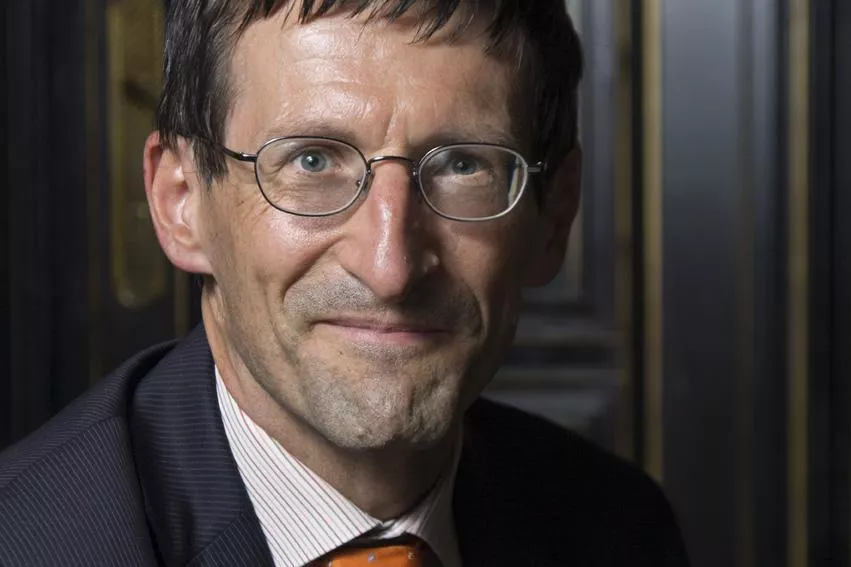
This article was produced for the "Issues" section of Omalius magazine #26 of September 2022.
"Homo sapiens has always extracted resources from the earth," says Johan Yans, head of the Department of Geology at UNamur and vice-president of the Institute of Life, Earth and Environment (ILEE). "It is so important to him that he has calibrated all the historical eras according to what he extracts: the Stone Age, the Copper Age, the Bronze Age, the Iron Age, the Age of Fossil Fuels and today the Age of the Electron, since we now extract all the elements of the Mendeleev Table for the manufacture of our everyday objects. According to the experts of the GIER (Groupe International d'Experts sur les Ressources), the IPCC's equivalent in terms of resources, our consumption of metals, but also of non-metallic materials extracted from the subsoil, is set to double during the transition from fossil fuels to renewable energies.
"Metallic materials such as lithium are now indispensable for electric batteries; cobalt, nickel and manganese are the main materials for future batteries," says Johan Yans. "All the classic metals such as copper, silver and gold are also present in high-tech equipment. As for non-metallic materials, they include sand, which is needed for photovoltaic panels, but also clay, limestone, etc.
As our consumption of fossil fuels decreases, our need for non-fossil fuel materials will also increase. "Everything electrical requires these materials. Renewable energies and high-tech are based on electricity. Of course, this problem would not exist if tomorrow we no longer needed electric cars and smartphones: we would then be back to what was the essence of the history of Homo sapiens, who lived without electricity until only a century ago," he recalls.
Sustainable extraction
In the Department of Geology at UNamur, researchers are working specifically to characterise the metallic and non-metallic resources of certain deposits (including water), in order to promote the best possible extraction, with the aim of sustainable management. "There are about 150 quarries registered in the sector plan in the extraction zone in Wallonia, which means that there is a quarry every 10 kilometres on average. But we no longer extract any metal: only sand, clay, chalk for the steel industry, construction, glassmaking, etc. Metallic materials are extracted abroad. The Geology Department works a lot with Morocco, Tunisia, DRC, Algeria, New Caledonia. Finally, we are trying to make people aware of Europe's total dependence on geological raw materials, which is paying off from an economic and geopolitical point of view, which has been particularly clear since February 2022 and the Ukrainian crisis.
As deposits are not bottomless pits, recycling processes are another point of attention for researchers. Over time, the grades and tonnages of the deposits (i.e. the extent of the deposit, but also the percentage of metal contained in each parcel) decrease "simply because the people who came before us, like the Romans, took the best parts..." says Johan Yans. Of course, technology now allows us to extract more useful material from a single stone," he continues, "but extracting copper from a deposit where there is less and less of it will still cost more and more. So we're trying to develop recycling, with the disadvantage that even if you recycle 90% of the material, after the seventh cycle you only have half of it left. Not to mention the difficulties of recycling metals that are present in great variety, but in small quantities, such as in mobile phones, for example, which have about 50 different metals..."
Salt in batteries
In the Department of Chemistry, Bao-Lian Su's team has been looking at the possibility of using certain chemical alternatives to lithium. The lithium-ion batteries (LIBs) used in mobile phones and electric cars are made up of this metal, which is mined underground and could one day run out. Not to mention the limited storage capacity of these lithium batteries. The UNamur researchers have therefore thought of replacing it with... sodium. Yes, salt," explains Bao-Lian Su. There is a huge amount of it on our planet. Sodium batteries already exist, but our new technology allows two charged particles to travel instead of one. In addition, we have developed an innovative new storage material. With this new material, energy can be stored or released during charging and discharging, which is not the case with conventional sodium ion batteries. "These dual-ion sodium batteries have emerging potential over traditional lithium batteries for the next generation of electrochemical energy storage systems because of their high voltage, high energy density, low cost and environmental friendliness," Bao-Lian Su summarises.
Smart windows
In the Department of Physics, Michaël Lobet and Luc Henrard are working on a project for intelligent windows that would make it possible to reduce the energy consumption of buildings. We know that 35% of energy loss in a building occurs through the windows," explains Michaël Lobet. We are therefore working on electrochromism, i.e. the ability to modulate the colour of a pane by applying an electrical voltage. Today, conventional electrochromic glass already works with visible light. But solar radiation does not only emit visible light: 50% of the sun's energy is emitted in the infrared. Our eyes cannot see it, but our bodies are sensitive to it because we feel the heat... "The aim is to differentiate between heat and light and to modulate the properties of the glass by taking this invisible part into account," continues the researcher. These dynamic windows could therefore make it possible to control both the heat that leaves buildings and the heat that enters them: the use of air conditioners during very hot weather is in fact a major energy expense, just like heating during colder periods.
Although this project is ambitious, it is still at the stage of fundamental research. In the field of materials research, there is an average of 15 years between the laboratory and the application," says Luc Henrard, "so I remain very cautious. I am therefore very cautious. We must remain modest," agrees Michaël Lobet. You make a small contribution to the overall benefit. However, I think that we can solve part of the climate problem through technology. Although Luc Henrard shares the idea that research has a role to play in the energy transition, the time factor makes him more pessimistic. "We don't have any more time: we had it, but we don't have it anymore. The materials we are talking about can be developed in 10 or 15 years, but the urgency is two or three years away. As he notes every day, most young researchers no longer conceive of research outside of ecological issues, which they see as an imperative. The desire to "devote part of your intelligence to a cause greater than yourself", as Michaël Lobet puts it, has become unanimous.
Sustainable computing
Finally, in one of its specialised fields, IT, UNamur is also thinking about more sustainable practices, since this sector is considered to be almost twice as polluting as aviation...
"There are two aspects to take into account," summarises researcher Benoît Frenay. "Firstly, the hardware aspect, i.e. the computers, smartphones and other terminals that we produce and which should ideally be recycled. Secondly, the software, i.e. the software, some of which consumes a lot of resources, but which is a more complicated consumption to measure, because it transits via servers, just as with the cloud, everything is done on another computer.
Today it is difficult to calculate the ecological footprint of streaming services or applications like Teams. "It would be necessary to have a small gauge, like those on washing machines. With the rise in energy prices, people are making sacrifices, but when it comes to IT, this awareness is not there. One way forward would be the development of a computer ecoscore.
"This is a very complex thing to put in place, because you have to take the whole cycle into account. But if we could compare the consumption of two competing platforms such as Netflix and Amazon Prime, for example, companies would themselves be obliged to find less energy-consuming solutions. We could imagine a scale like the one that exists for household appliances, a classification from A to F." So that we don't spend so much energy with our eyes closed.

Etienne de Callataÿ: "History shows that rising energy prices contribute to energy efficiency
UNamur economist Etienne de Callataÿ sees rising energy prices as an opportunity for energy transition. On condition that the social policies that go with it are adopted.
Will higher energy prices have a positive impact on the environment?
Ideally, we would have the wisdom to change our behaviour and thus reduce our consumption of fossil fuels, even when fossil fuels are cheap. But we don't have this wisdom. It is therefore the increase in prices that will make us change our behaviour and make alternative energies profitable. Until recently, people insulated their homes out of idealism, not economic calculation. Today, we can do it for one or the other reason, or for both.
Is this a blessing in disguise?
This increase is an evil for a good and at the same time an evil altogether... Because if the cause is the invasion and destruction of Ukraine, it is an evil for an evil. But the positive consequence is the impact on our behavioural changes. We know that cars marketed in the 1980s consumed less than cars marketed in the 1960s, simply because between the two there was a sharp increase in petrol prices. History shows that higher energy prices contribute to energy efficiency.
How can we make this increase bearable for modest households?
Every time we take measures to reduce energy prices, we will be giving a gift to Mr Putin. This is a geopolitical and environmental mistake. In my opinion, the price of energy must remain high and there must be social support linked to income. A person who earns 1,000 euros and spends 200 euros on heating must be able to have an income of 1,200 euros so that he or she is free to keep the same energy consumption, which would increase to 400 euros, or to put on an extra jumper and then pay only 350 euros while spending 50 euros on other things. They should be free to change their behaviour or not. If we subsidise energy directly by reducing taxation, we discourage people from changing their behaviour and penalise renewable energy.
This article is taken from Omalius magazine #26 (September 2022).




